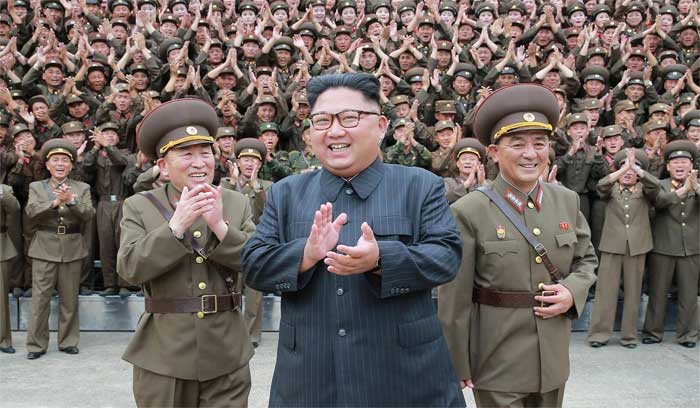The marvels of technology are not only making our daily lives comfortable, safer, and productive but they are also making travel by road, rail, sea, and air more convenient, safer, and enjoyable.
The pilgrimage to Makkah, one of the five pillars of Islam, is a mandatory ritual for every healthy and financially able Muslim to perform at least once in their lifetime. In the early days of Islam, pilgrims used to travel between the two holy cities of Makkah and Medina by foot or on camels. The treacherous journey was too long and difficult, covering about 400 kilometers (250 miles), and taking up to two weeks to complete the journey. Pilgrims had not only to face water & food scarcity but also dangers from wild animals and robbers.
In modern times, science and technology has made the treacherous journey much shorter, comfortable, safer, and without the worries of water and food supplies shortages. With the automobile adaptation in the kingdom, building of the roads between the holy cities, weeks’ travel was reduced to just a day journey.
Saudi government has always been in the forefront in adapting technological advancements in transportation, communication, housing, healthcare, food supplies and safety for the pilgrims. Over the periods, Saudi government has invested billions of dollars in developing and expanding the infrastructure and facilities of Makkah and Medina, such as building new hotels, roads, bridges, tunnels, metro lines, and airport terminals, to accommodate the ever-increasing number of pilgrims every year. Additionally, the kingdom is continually expanding the space around Bait-Allah (the House of God/Kaaba) to accommodate the growing number of the pilgrims from around the world during the Hajj period by converting adjacent old buildings to expanding space for the ritual performances and accommodations and to spend most of the time in the Kaaba (Bait-Allah) performing the rituals. As part of the facilitation, restaurants, convenience stores, money exchange centers and barber shops are also within walking distance.
With the emergence of the ‘high speed trains’ (bullet trains) for mass transportation in the advanced countries, including China, Saudi government decided to embrace on the ‘high speed railway,’ first to connect the holy cities of Makkah & Medina for the pilgrims. The main impetus behind was to reduce the ever-increasing traffic jams on the motorways in between Makkah and Medina, reduce travel time further from a long-day journey by buses and cars to just a couple of hours and notably to eliminate the road accidents and fatalities. The most important benefit was freeing up more time from the traffic congestions so that the pilgrims can spend their maximum time in devotion to Allah (SWT) in Bayt-Allah (Kaaba), in supplication, and praying in Masjid-e-Nabvi (Prophet’s Mosque and His Mazar-e-Shareef in Medina). The project was called the “Haramain High Speed Railway.”
The project ‘Haramain high-speed rail’ (HHR) was launched by the Saudi Railway in 2009 and was completed after delays in 2018. In Arabic Haramain refers “two sanctuaries,” the holy cities of Makkah and Medina. Today, the ‘Haramain high-speed rail’ connects Makkah and Medina, the two holy cities of Islam. The HHR also serves Jeddah and Rabigh, the two important economic and industrial centers. The HHR has a capacity of up to 60 million passengers a year, including millions of Hajj and Umrah pilgrims who visit Makkah and Medina every year.
The project cost was about $16 billion and involved several international companies such as China Railway Construction Corporation, Alstom Transport, Foster + Partners, Buro Happold and Renfe.
Germany, Japan, and the USA did not bid for the HHR project as they were not able to meet the strict technical specifications and requirements of the Saudi Railway Organization. The conditions included were the ability to operate at a speed of 300 kmh in extreme high temperatures, sandstorms, and humidity. Most importantly, separate facilities for men & women and respecting the sanctity of the holy sites as part of the Islamic law and customs compliance were also required. Other countries such as China, France and Spain had competitive advantages in costs and building high-speed railways experience in similar environment in other countries. For example, China had built several high-speed railways in its own desert regions. France had developed advanced technology for high-speed trains such as TGV and AGV, and similarly Spain had successful experience building a high-speed railway before.
The train stations are diamond shaped with plenty of natural and electric lighting. Usually, they are not crowded besides just a few minutes before the train schedules and unlike in other countries, have very limited services. During the train timings, uniformed staff are available at the platforms to direct the passengers to their compartments, help with their luggage, and provide wheelchair service.
The trains run 50 times a day at a speed of 300 kph (186 mph). They are among the top 10 fastest trains in the world! The trains cover a 450-kilometer (280 mile) distance on the network, connecting besides Makkah and Medina, Jeddah Airport, Al-Sulimaniyah (near Jeddah city center) and King Abdullah Economic City. There are several just 1-stop (Al-Sulaymaniyah) trains every day that run between Makkah & Medina. It takes about 2 hours to complete the journey between the holy cities covering a distance of about 450 KM (280 miles) between them. This is a unique and for most of the pilgrims, once in a lifetime experience that will stay with them as long as their pilgrimage!
Tickets can be bought far in advance for the same day travel or for future travel using the HHR app (English & Arabic) or at the self-automated kiosk at the train stations. During the purchase process, seats of choice can be reserved using the layout/seating arrangements of the train, including the seat direction (facing toward the destination or the origination). Every train has economy and business class compartments. In general, business class tickets are about two times economy class. For example, during the Hajj week (except Friday), the lowest economy fare is 86 SAR while for the business class it is 180 SAR. Usually, the fare changes with the time of the day and day of the week. Friday fares are much higher than the other days. Buying tickets and reservation requires passport information and a credit card.
Access to the platforms (secured area) to board the train is through the self-checking security readers using the digital ticket confirmations on mobile phones. Trains run at their exact times by minutes and are immaculately clean with all the seat functions (reclining, lighting, fan speed, etc.) perfectly working along with the limited audio/video service on every seat monitor. In business class, seat configuration is 2 by 1 while in economy it is 2 by 2 on each side of the compartment. Besides the overhead storage, there is storage space at the beginning and at the end of each compartment. Like in airplanes, food and beverage services are catered for by well-dressed uniform staff. In business class, it is free while in economy, passengers have to pay for the items. Trains also have a canteen area where people can get food & beverage items. Announcements (including prayer calls) are in Arabic & English and are also displayed on the wide screen monitors that show the route of the journey, distance, time, and the speed. Usually, the train reaches its maximum speed of 300 kph in just a few minutes.
The train compartments are stunningly quiet, and the entire journey is smooth and comfortable without sharp turns or abrupt jolts for the entire time. The trains have separate prayer areas for men and women. Certain days of the week visits to Kaaba and Mazar-e-Shareef (Rawda) require in advance reservations/permits which can be obtained using the app ‘Nusuk.’
According to Tawfiq Al Rabiah, Saudi Minister of Hajj, “over two million pilgrims from over 160 countries will come together” this year (2023). More trains are added to accommodate the influx of pilgrims. During Ramadan, the peak Umrah period, more than 100 train trips per day were carried out with seamless connections to the final destinations. The seamless travel experience is guaranteed by using the Ai & ML based technology platforms to every pilgrim regardless of the language and their special needs.
The adaptation of the cutting-edge marvels of technology in every aspect of the pilgrims’ journey from start to finish seamlessly has made the modern-day pilgrimage journey not only shorter and safer but also freeing up more time for devotion, supplication, following rituals and seeking mercy from the Almighty God.
Hajj travels in the era of Ai & ML




